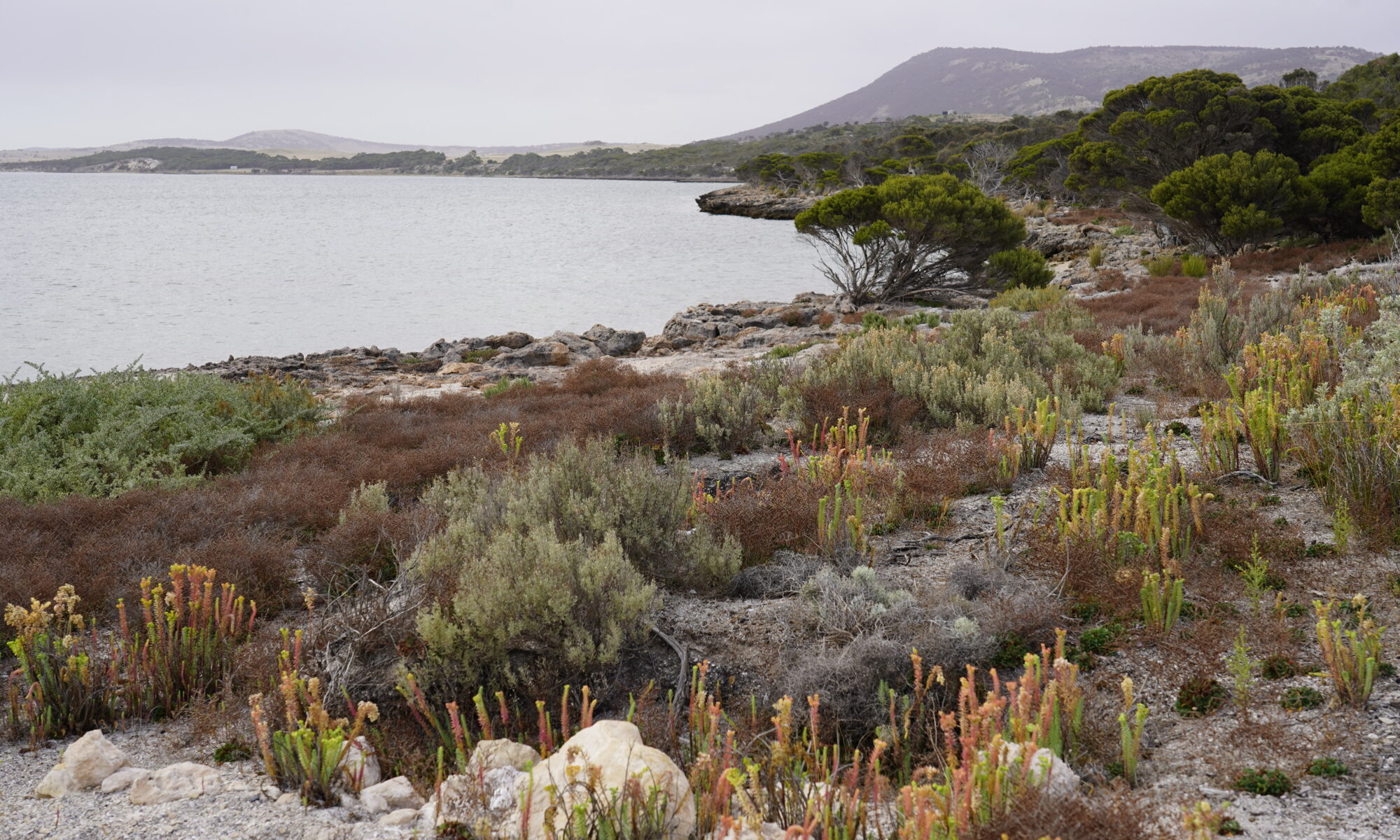Author: Mrs A
Location: Coffin Bay, Mount Dutton Bay and Sheringa Beach
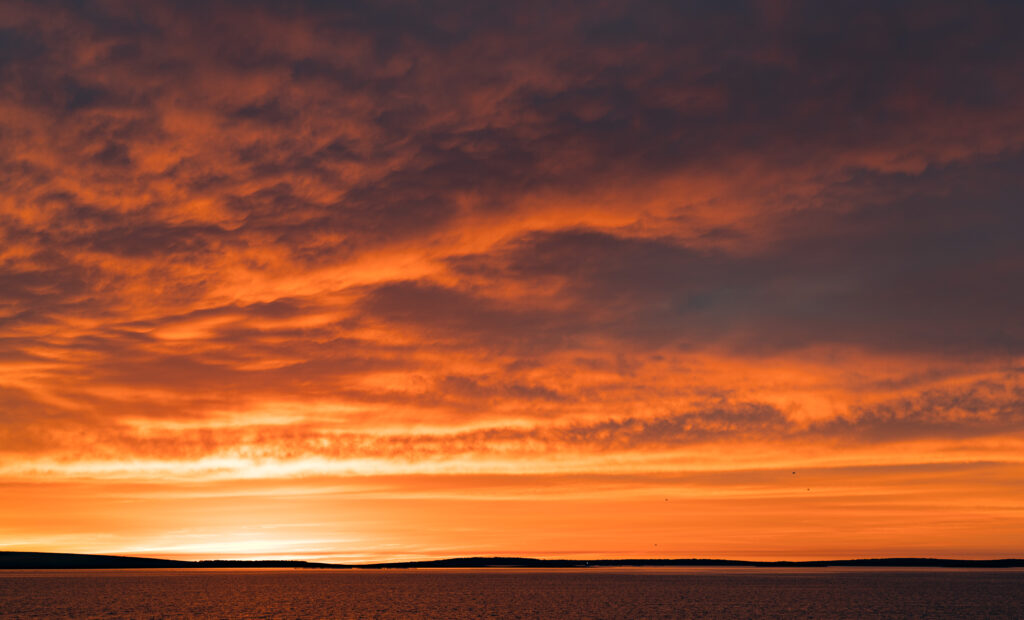
With a new set of steps installed on the caravan, we pulled away from Port Lincoln and drove about an hour to an olive grove in Mount Dutton, just north of Coffin Bay.
We are now securely in oyster territory, the clear waters around these parts contributing to succulent creamy molluscs which are famous throughout Australia and restaurants in China and Singapore. Coffin Bay oysters are actually Pacific Oysters, native to Japan, which were first farmed here in the late 1980s. They feed on plankton, which due to the nature of the bay is plentiful here and the oysters grow faster than they would elsewhere. We managed to work our way through two dozen each over our two day visit here!
Our campsite for the following two nights was nestled on the edge of Mount Dutton Bay, twenty minutes drive from Coffin Bay in the grounds of an olive farm. As we pulled in the owners were busy trimming the trees, and there was freshly bottled olive oil for sale. We paid our $10 a night to stay there and of course purchased a bottle of oil.
The olive grove was home to many birds, most notably Port Lincoln Ring Necked Parrots – lovely green and blue parrots with bright yellow tummies and a yellow ring around the back of their necks. With very little natural fresh water in the peninsula, they got much of their moisture from dew, rainwater where possible, and their food if able – and woke us up one morning drinking the moisture from our skylight.
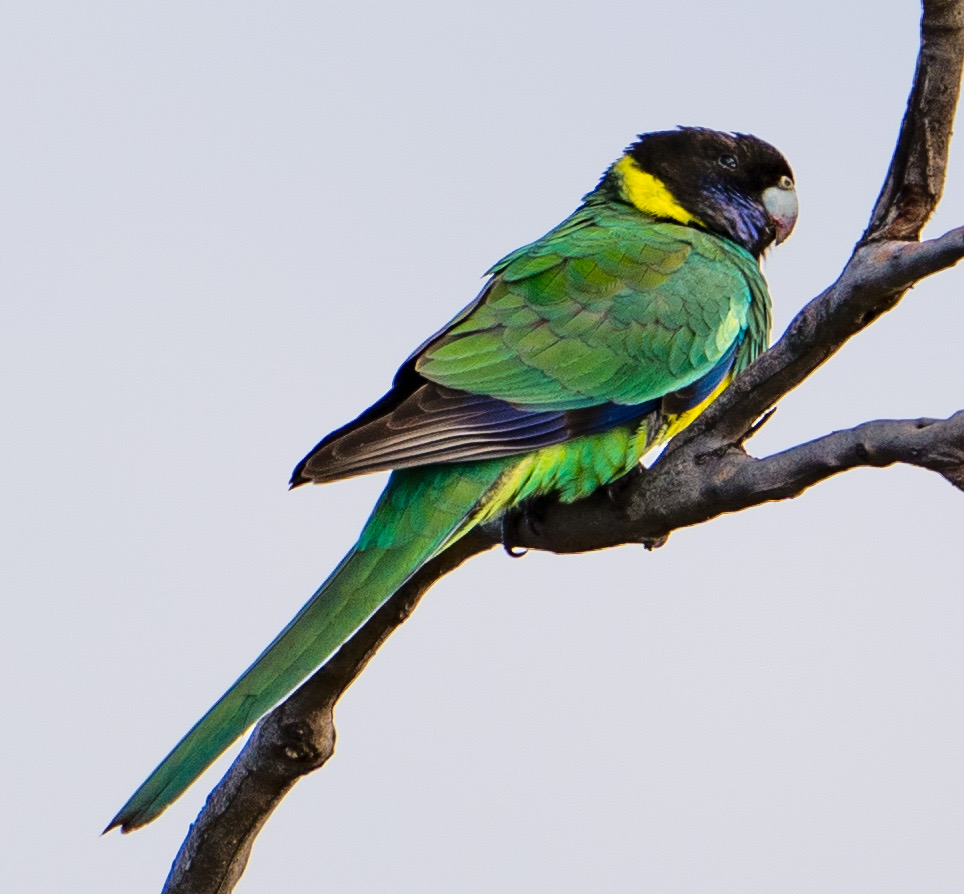
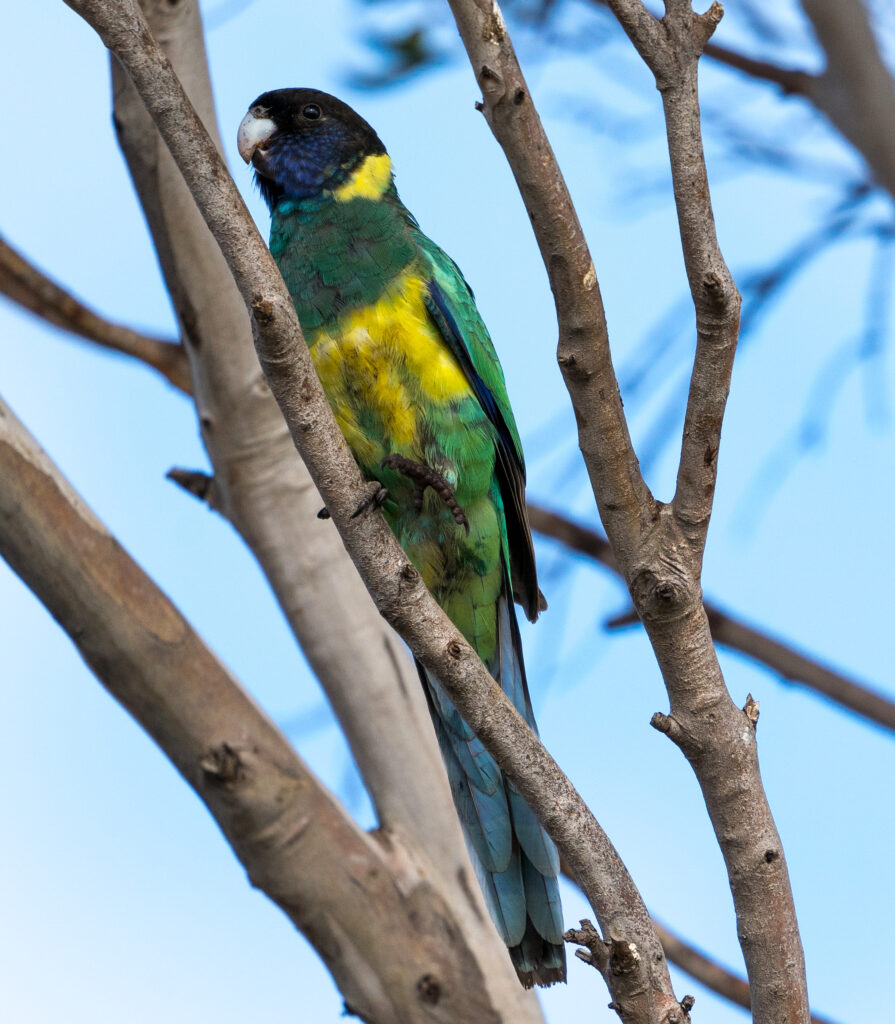
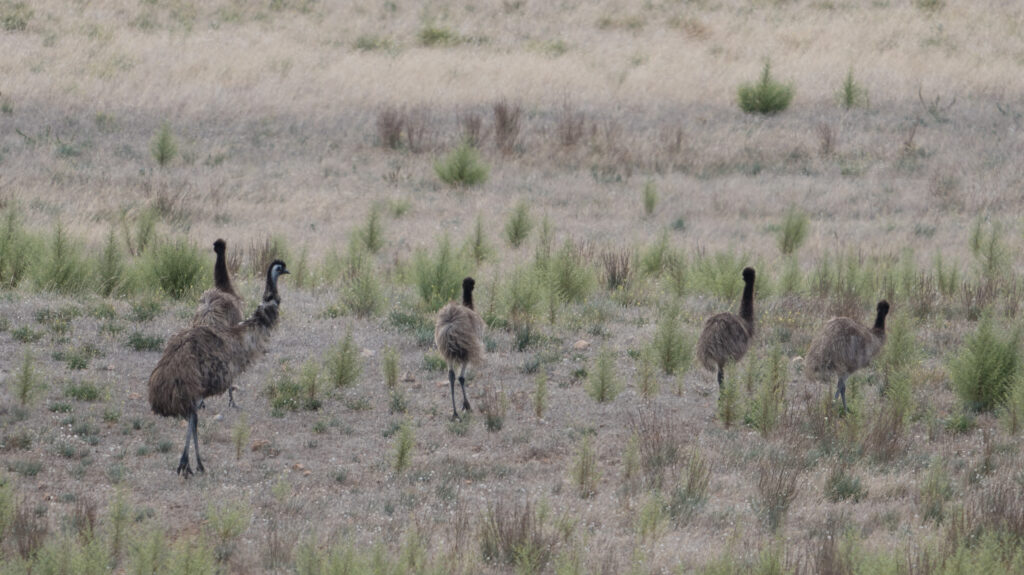
We were also delighted to see Singing Honeyeaters here, their trilling voices often turning to something more sinister when they saw Tassie exploring. She loved this camp and, for her, walked a long way accompanied by her bodyguards, and even disappeared into a cat-sized underground limestone cave for a few minutes which gave us a fright!
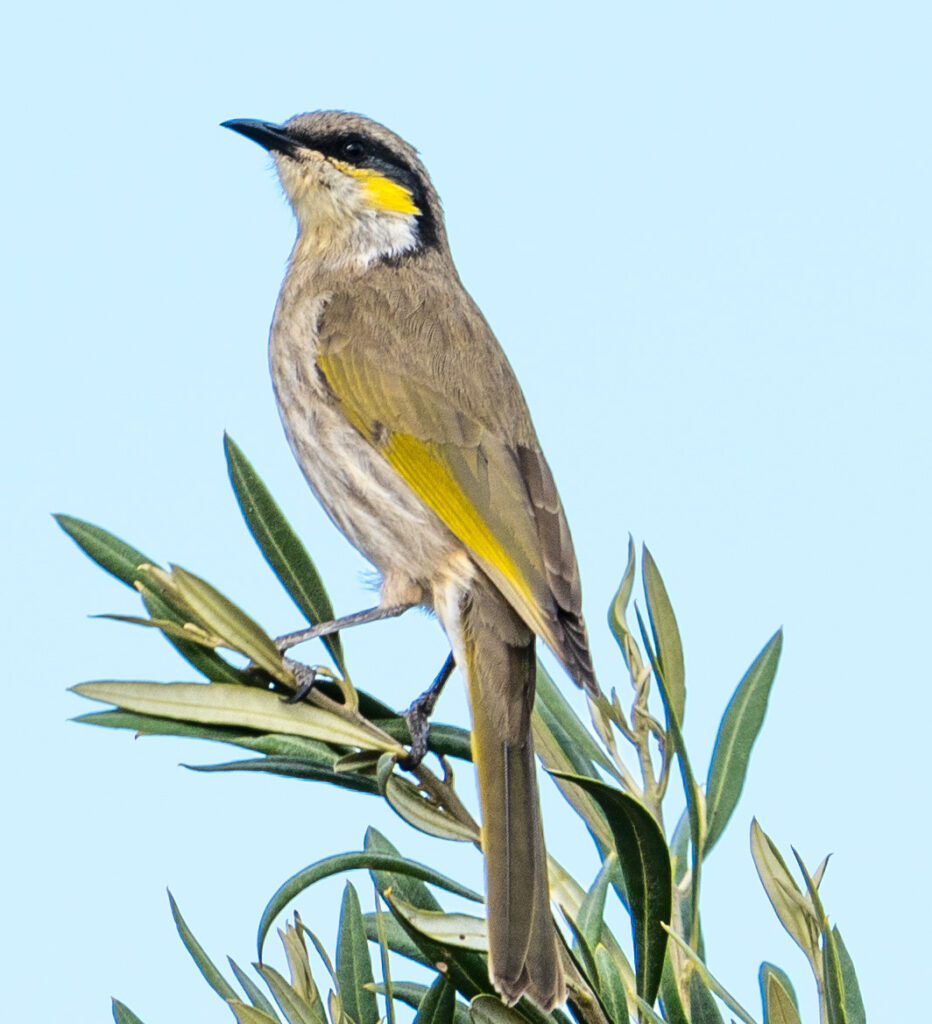
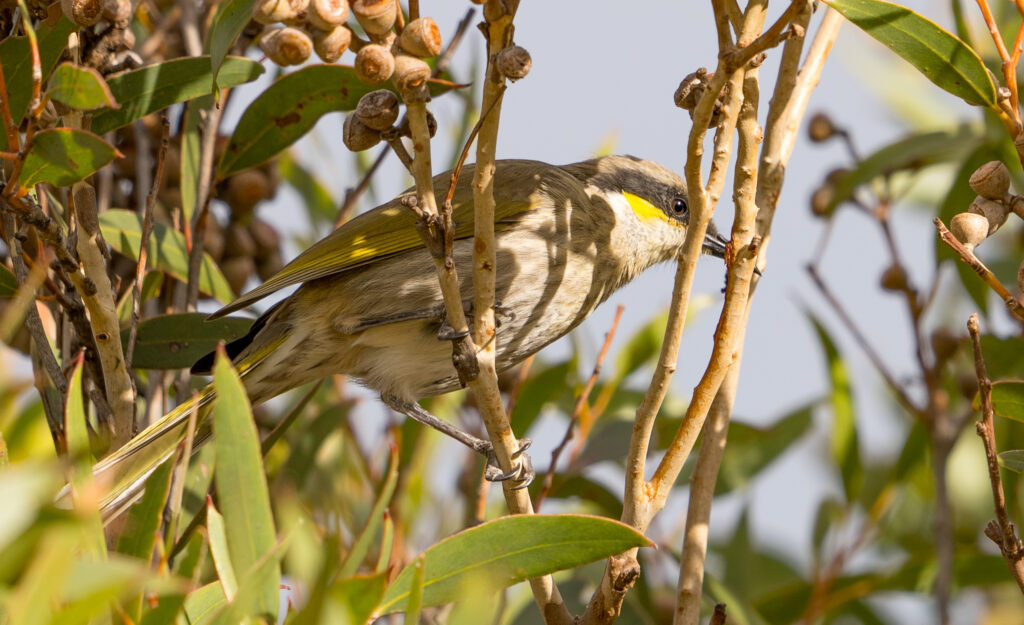
We explored the bay from the camp, following a path which looked like it had been walked for hundreds of years, way beyond the handful of campers at the grove. It reminded us to thank and acknowledge the Nauo and Barngarla people, who were custodians of this region for many thousands of years before white settlement. They made use of a wide variety of fish, inland mammals, reptiles and plants and cared for this land.
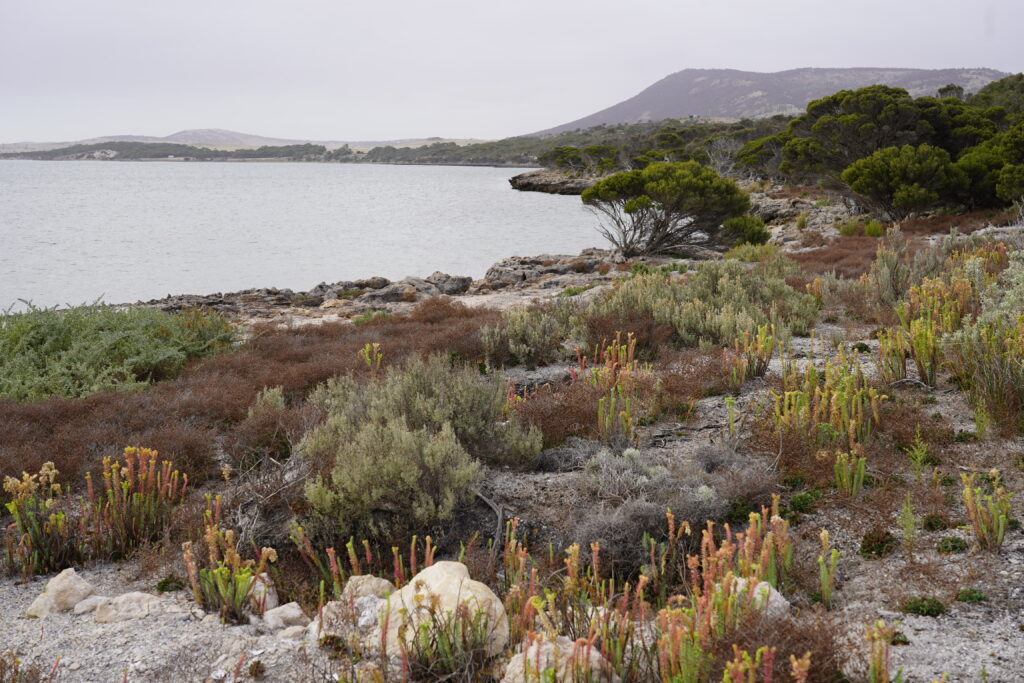
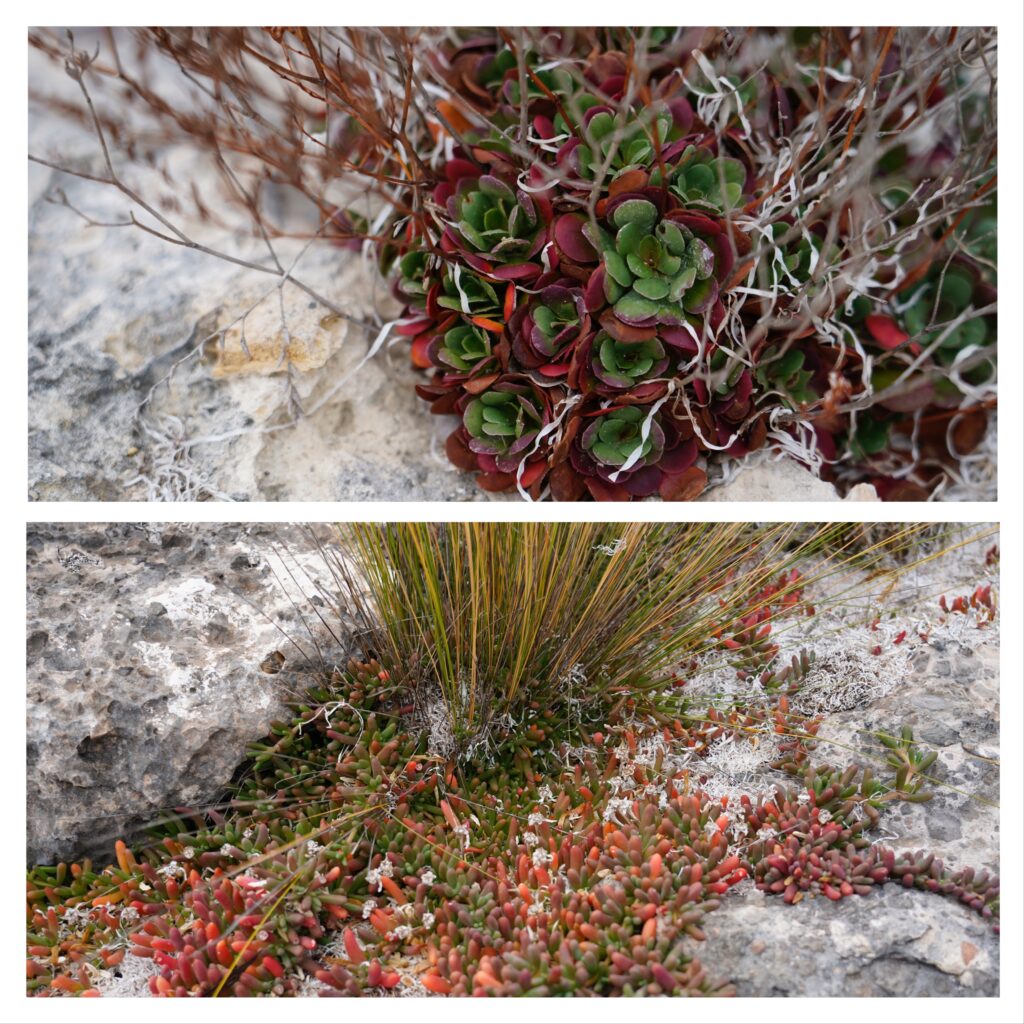
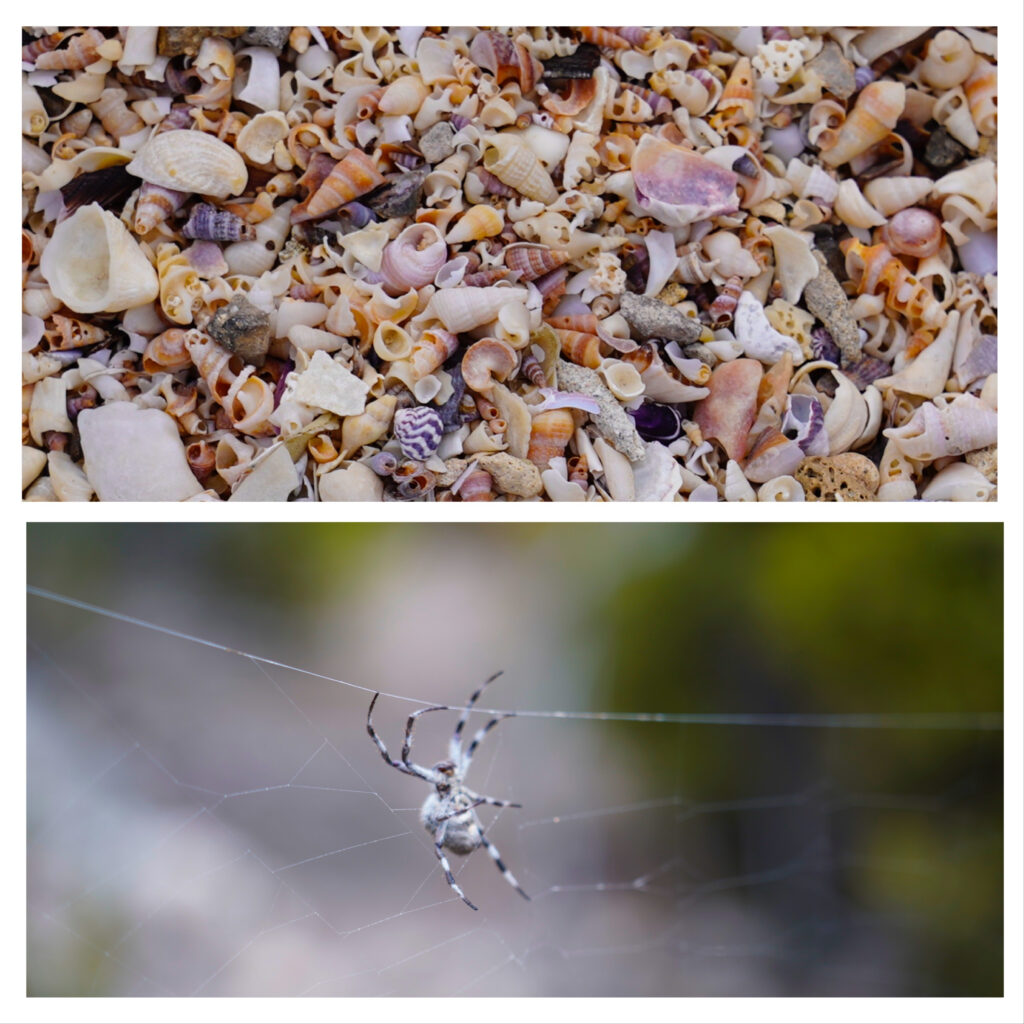
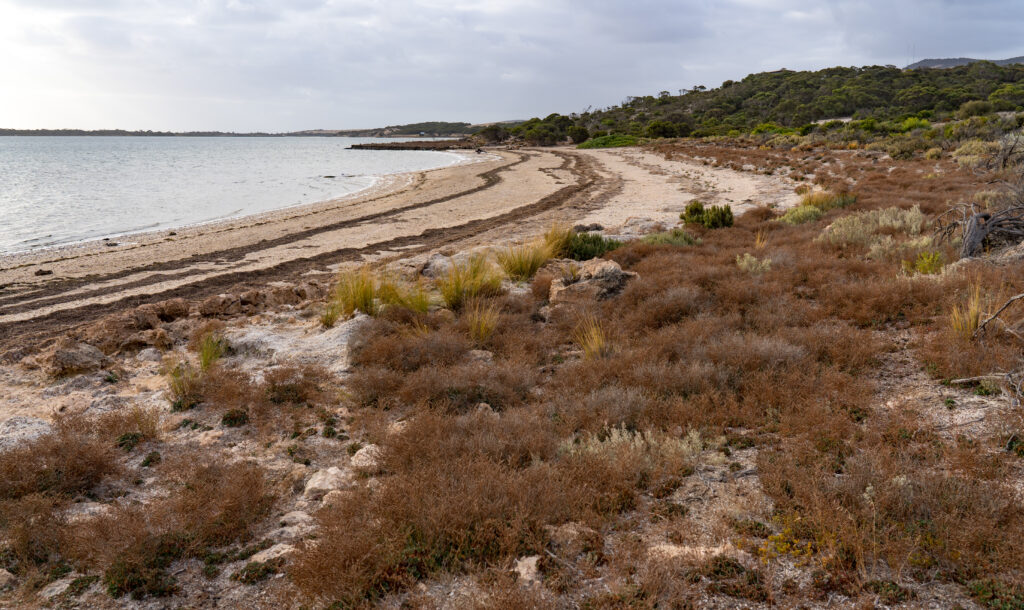
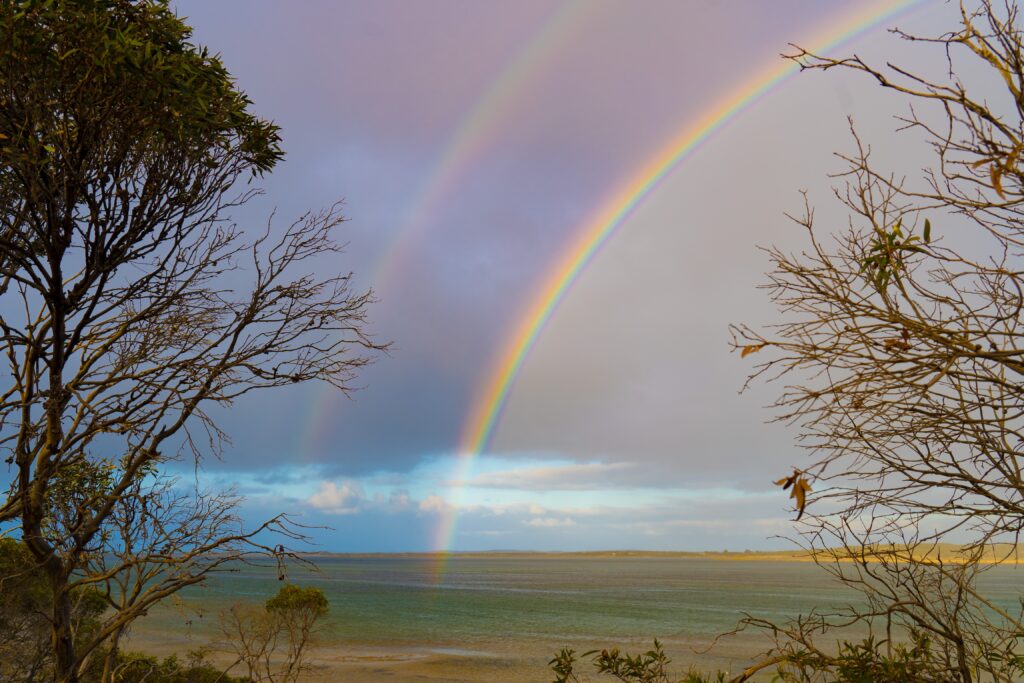
After two nights here we made our way up the coast towards the small village of Elliston where we had booked in to a campsite for a few nights. We had a spare night up our sleeve en route and picked out a random campsite on the coast called Sheringa Beach, again costing a princely sum of $10 a night to stay there.
It was a real surprise to arrive to the spectacular location. Elliston District Council has invested in the area, creating high quality level fenced camping areas amongst the dunes, providing bins and even a new flushing toilet to service visitors. We wish more councils would do something like this.
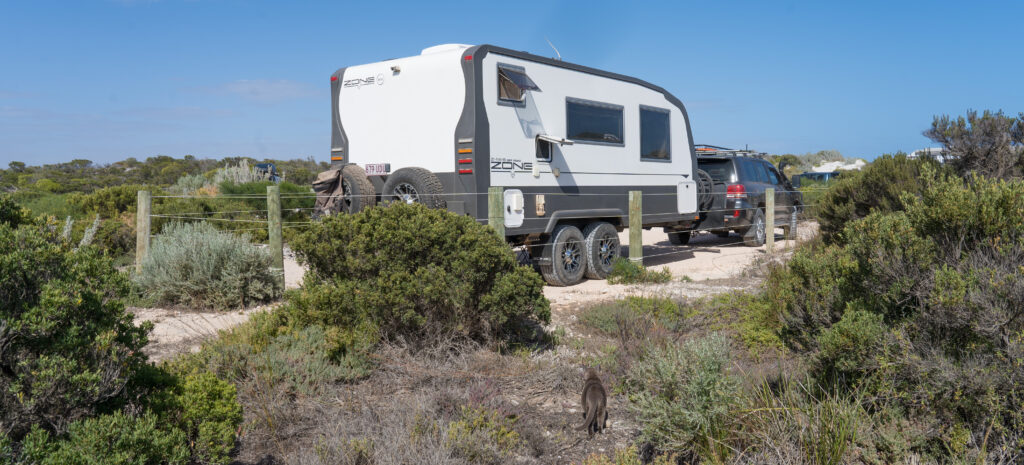
Tucked in behind the dunes, we could hear the sound of the surf on the other side, and followed a sandy path to explore. Wow! A spectacular 4km long white sand beach stretched along the coast to the next headland. We decided to head off for an explore (map).
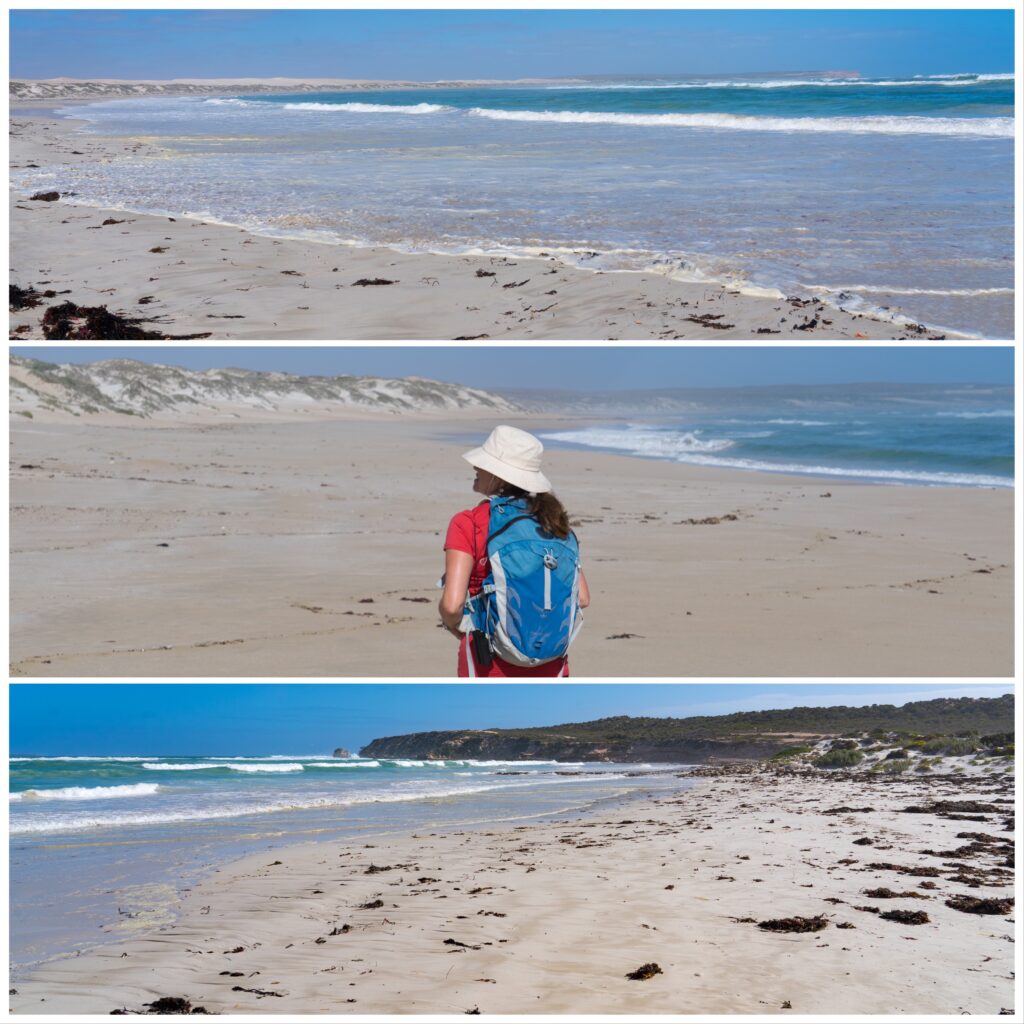
As usual, once we had left the immediate entrance to the beach we didn’t see anyone. Apparently there is four-wheel-drive access to this beach, but it doesnt look like anyone has used it for a long while. The beach is pristine, not a single scrap of rubbish anywhere, and it is clear from all the shore birds present that they appreciate it.
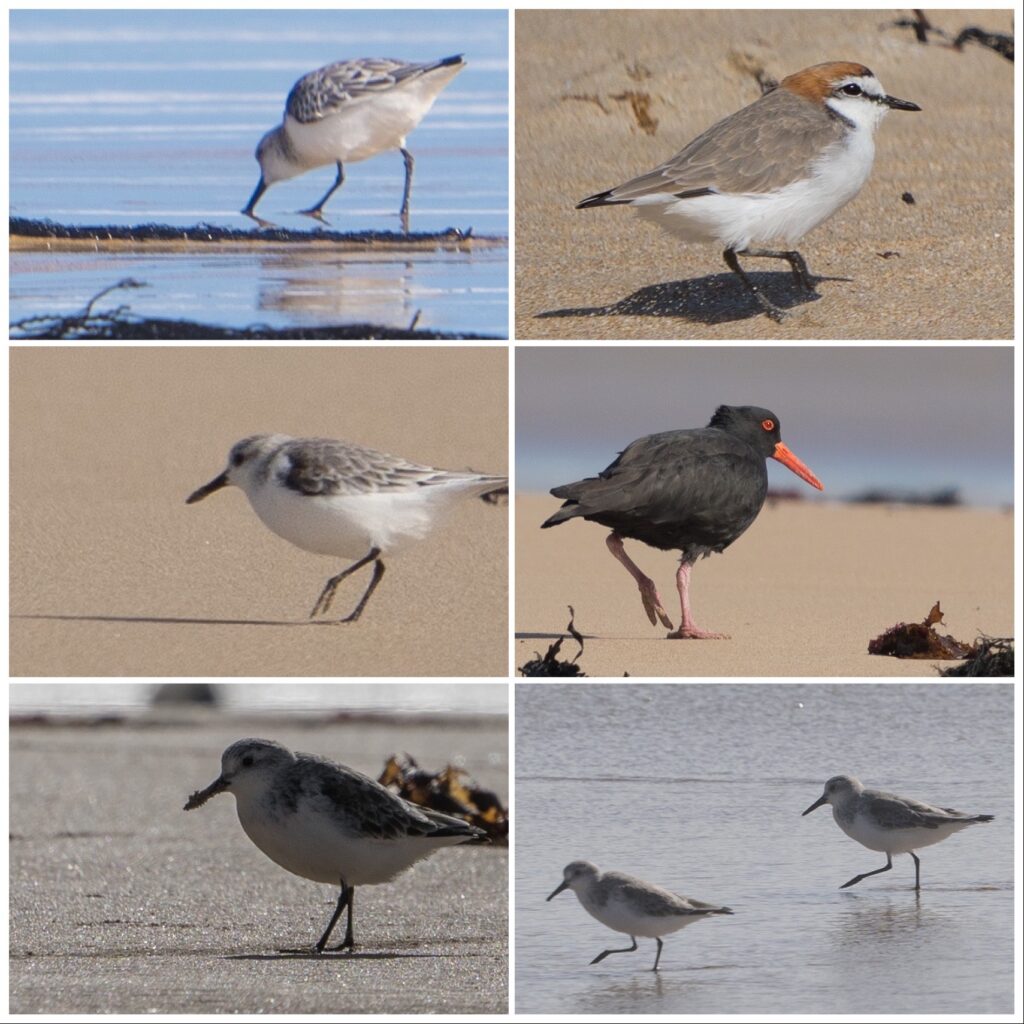
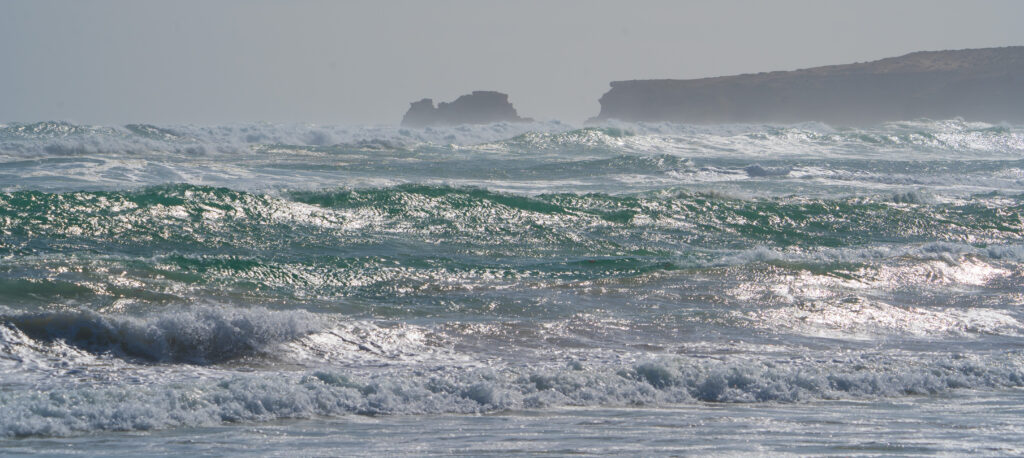
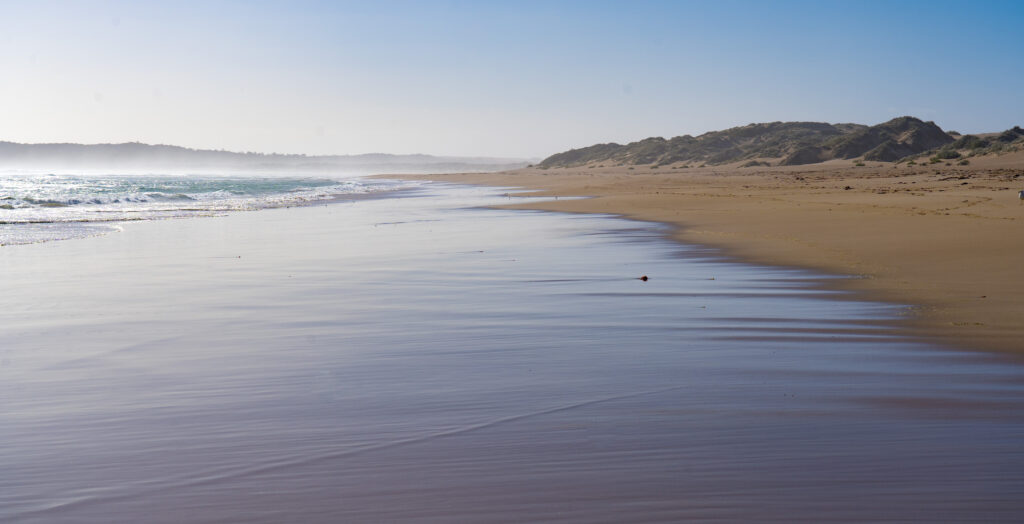
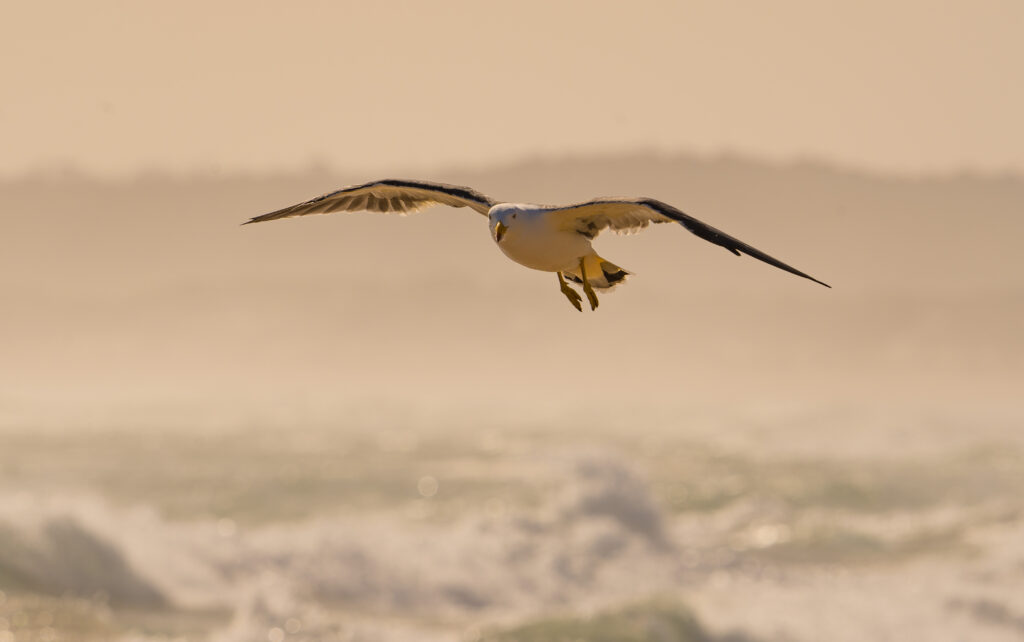
Sitting up behind the beach are huge sand dunes, looking like towering snow capped hills stretching along the coast.
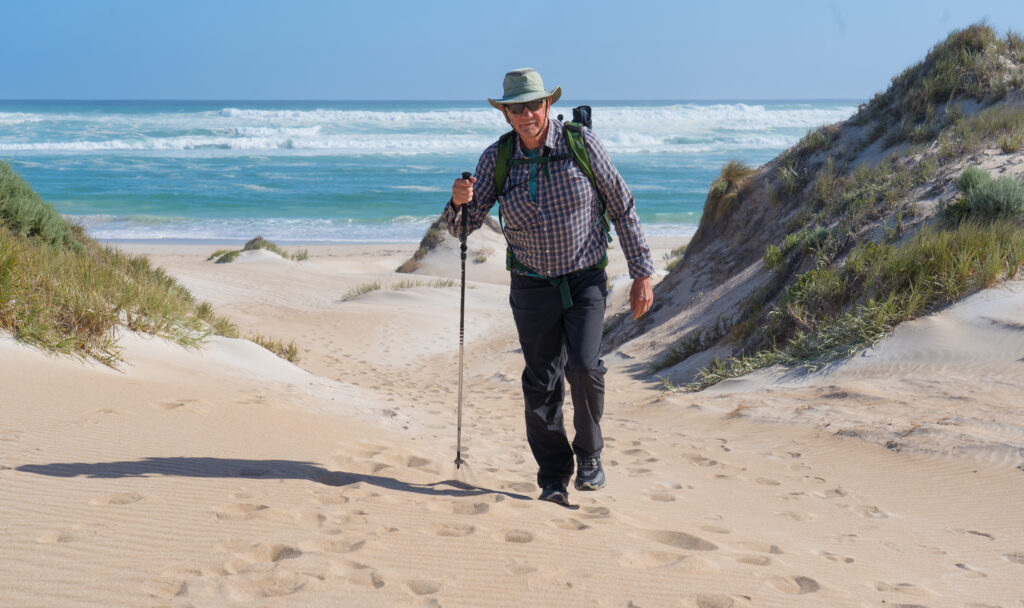
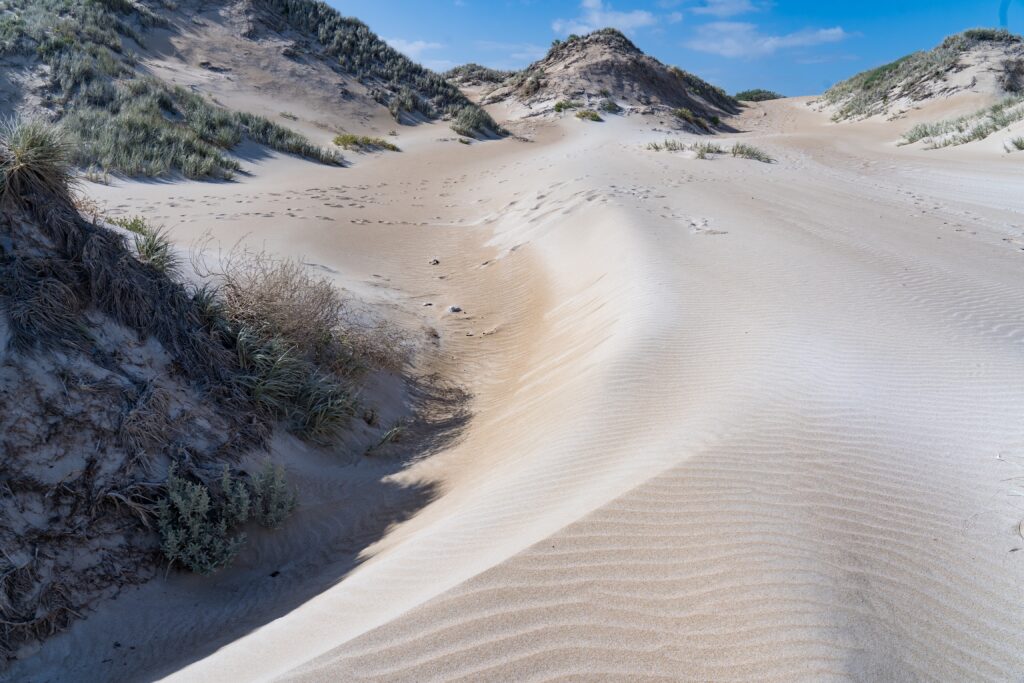
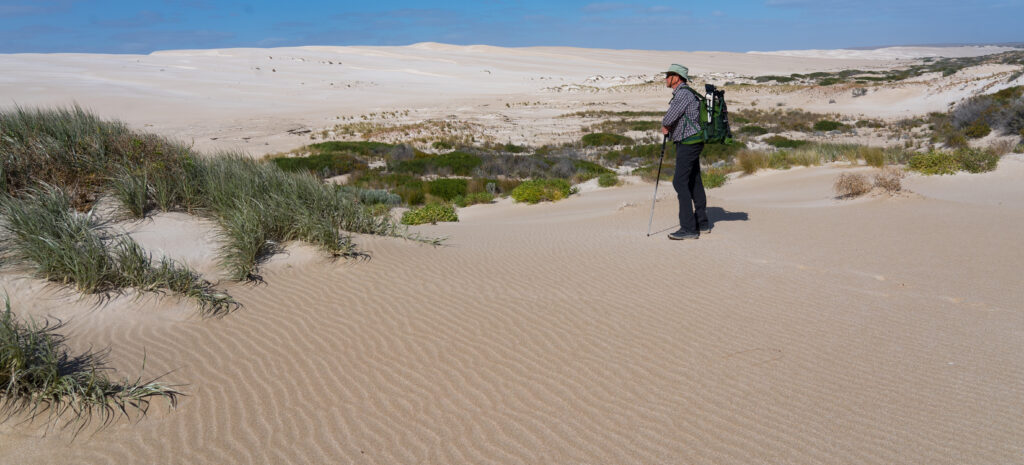
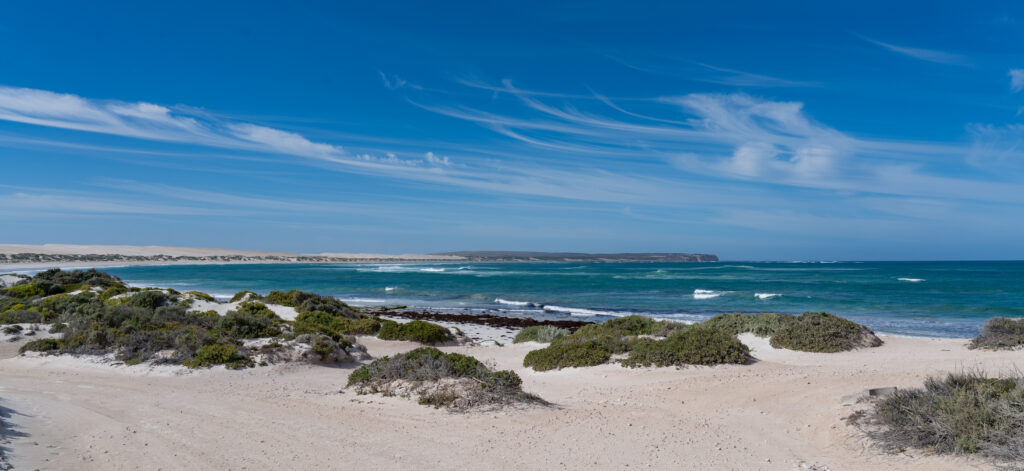
Apparently it is not unusual to see dolphins swimming off the coast here, but they were not playing on our visit. Before we moved on the following morning we hiked up to the headland to see along the coast. The waves were wild and wind blown, the rocks sculpted by the constant force.
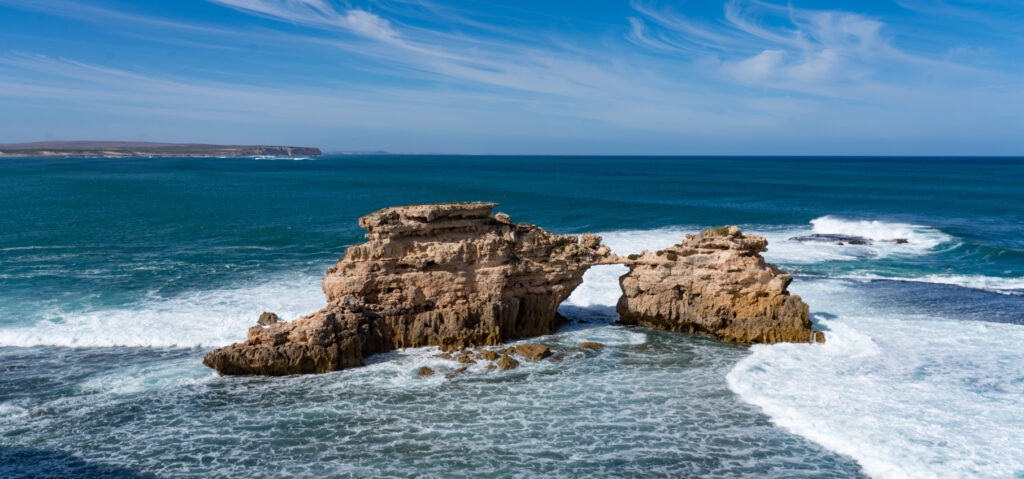
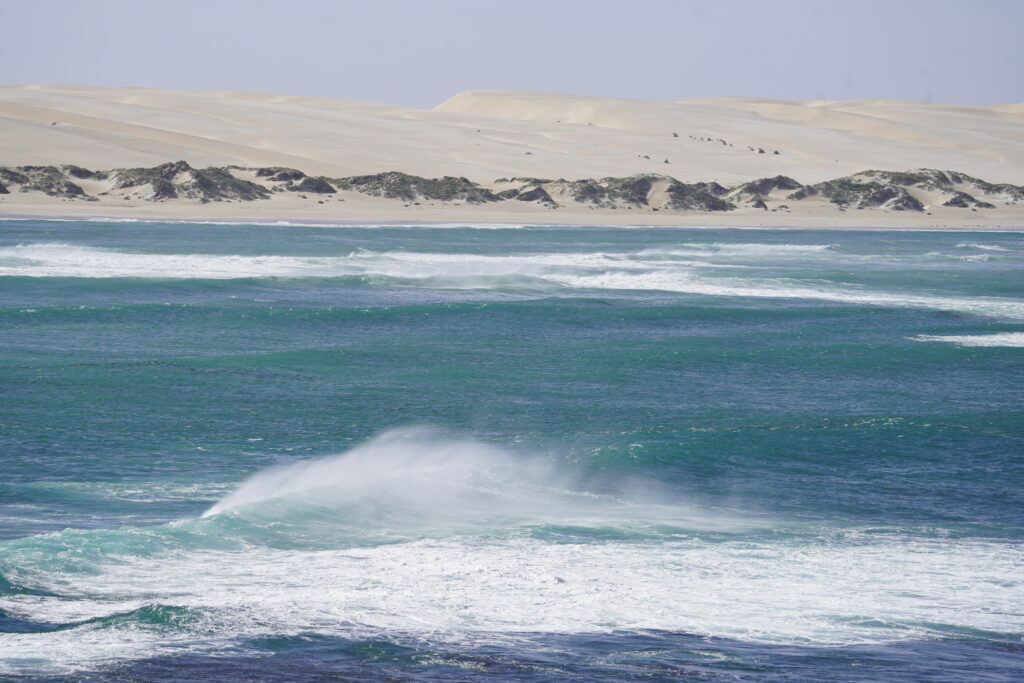
It was a beautiful night’s stay and we’re certain to return. We packed up camp, Tassie had a final explore through the dunes, and we went on out way up the coast to Elliston.

